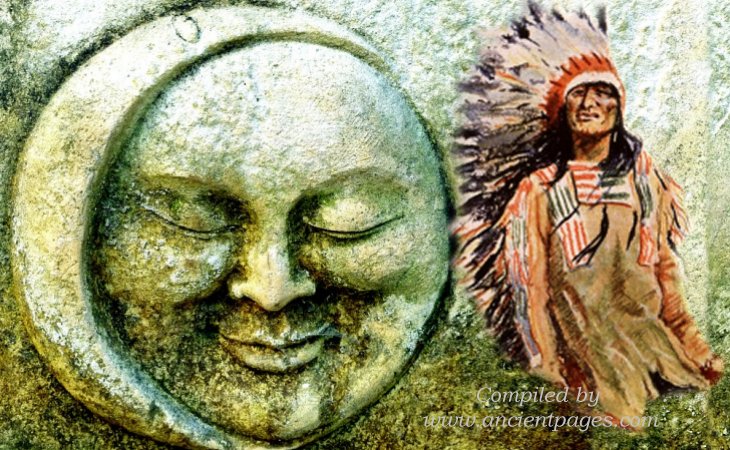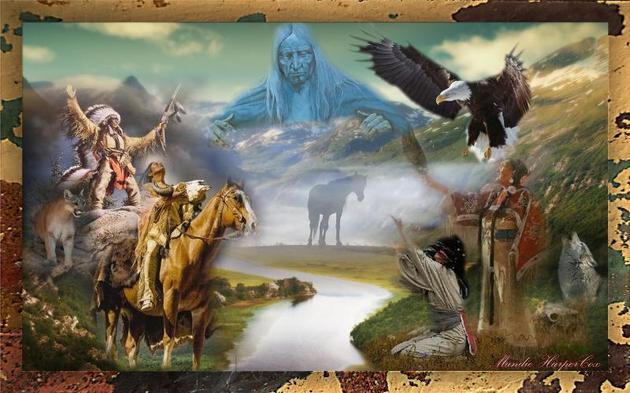
Echoes of the Earth: The Enduring Spirituality of the Cherokee Nation
Beyond the well-trodden narratives of forced removal and resilience, the Cherokee Nation holds a vibrant, deeply rooted spiritual cosmology that continues to shape its identity, traditions, and connection to the world. It is a spirituality not confined to dogma or scripture but woven into the fabric of daily life, an intricate tapestry of reverence for the natural world, a profound sense of balance, and an unbreakable bond with ancestral wisdom. To understand the Cherokee people is to understand the enduring power of their spiritual path, a path carved by generations and illuminated by the Great Spirit, known as Unetlanvhi.
At the heart of Cherokee spirituality lies the concept of interconnectedness and balance. The universe, in their view, is a meticulously ordered system where everything—humans, animals, plants, celestial bodies, and unseen forces—is intricately linked. This balance is not static; it is a dynamic equilibrium that requires constant attention and respect. The number four is sacred, representing the cardinal directions, the seasons, the four elements (earth, air, fire, water), and the stages of life. The number seven, equally potent, reflects the seven clans of the Cherokee, the seven directions (north, south, east, west, up, down, and center), and the seven ceremonies.

"Our world is a reflection of the Creator’s harmony," explains a Cherokee elder during a cultural workshop. "Every plant has a purpose, every animal a lesson. When we disturb this balance, we disturb ourselves." This sentiment underscores the Cherokee belief in a reciprocal relationship with nature. Unlike Western views that often position humanity as dominant over nature, Cherokee philosophy places humans within nature, as an integral part of its delicate ecosystem.
Reverence for the Land and its Inhabitants is perhaps the most visible manifestation of Cherokee spirituality. The land is not merely property; it is Mother Earth, a living entity that sustains life and holds the spirits of ancestors. Mountains, rivers, and specific geographical features are imbued with spiritual significance, serving as sites for prayer, ceremonies, and introspection. The Blue Ridge Mountains, for instance, are seen not just as a geographical boundary but as sacred guardians, their peaks touching the heavens and their valleys cradling ancient wisdom.
Animals hold particular significance, each species embodying specific lessons and powers. The Bear, for example, is revered as a powerful healer and a symbol of strength and introspection, known for its knowledge of medicinal plants. The Deer represents grace, sustenance, and the spirit of the hunt, while the Eagle, soaring highest, is seen as a messenger to the Creator, carrying prayers skyward. Before hunting, traditional Cherokee hunters would offer prayers of gratitude and ask for permission from the animal’s spirit, acknowledging the sacrifice and ensuring the continuation of the life cycle. This practice highlights the deep respect and understanding of the food chain, where taking a life is a sacred act, not a casual one.
Plants, too, are seen as gifts from Unetlanvhi, possessing not only physical properties but also spiritual essence. Corn, the life-giver, is central to Cherokee agriculture and ceremonies, symbolizing sustenance, community, and the cycle of life and death. Tobacco is used as a sacred offering, its smoke carrying prayers and intentions to the spirit world. Traditional medicine people possess an encyclopedic knowledge of thousands of plants, understanding their healing properties for both physical ailments and spiritual imbalances.
Ceremonies and Rituals form the backbone of communal spiritual life, reinforcing connections to the Creator, ancestors, and each other. The Green Corn Ceremony (Selu Tsungali) is one of the most important annual events, typically held in late summer when the corn is ripe. It is a time of thanksgiving, renewal, and forgiveness. During this ceremony, old fires are extinguished, and new fires are kindled from the sacred communal fire, symbolizing a fresh start for the community. Debts are forgiven, grievances are put aside, and the community comes together in gratitude for the harvest and the promise of new beginnings.
The Stomp Dance, an ancient social and ceremonial dance, is another vital expression of Cherokee spirituality. Performed around a sacred fire, the rhythmic drumming and chanting, along with the distinctive shakers worn by female dancers, create a hypnotic energy that connects participants to the earth and each other. It’s not just a performance; it’s a communal prayer, a celebration of life, and a way to maintain physical and spiritual health. The circle formation of the dance symbolizes the never-ending cycle of life and the unity of the community.
Oral Tradition is the living library of Cherokee spirituality. Stories, myths, and legends are not mere entertainment; they are vehicles for teaching moral lessons, explaining the origins of the world, transmitting historical knowledge, and reinforcing cultural values. Tales like the origin of strawberries, gifted by the Creator to bring two estranged lovers back together, beautifully illustrate Cherokee concepts of reconciliation, forgiveness, and the restorative power of nature. Elders, as keepers of these stories, play a crucial role in passing down this wisdom to younger generations, ensuring the continuity of the spiritual path.
The Healers and Medicine People (Didanvwisgi) occupy a revered position within Cherokee society. These individuals are not just practitioners of herbal medicine; they are spiritual guides, interpreters of dreams, and facilitators of communal well-being. Their healing practices often involve ceremonies, prayers, and a deep understanding of the spiritual roots of illness. They believe that physical ailments often stem from an imbalance in one’s spiritual or emotional life. A beloved and historically significant figure, Nancy Ward (Nan’yehi), while more widely known as a Beloved Woman (Ghigau) for her political and military leadership, also embodied the spiritual wisdom and healing qualities that earned her the respect of her people and even her adversaries.

The Enduring Legacy and Resilience of Cherokee spiritual beliefs are remarkable, especially given the immense pressures of colonization and forced removal. The Trail of Tears, the forced relocation of the Cherokee and other Southeastern Indigenous peoples in the 1830s, was a catastrophic event that shattered communities and caused unimaginable suffering. Yet, even in the face of such profound trauma, the core spiritual beliefs persisted. The land may have changed, but the spirit of interconnectedness, reverence, and balance traveled with the people, finding new roots in Indian Territory (present-day Oklahoma).
While many Cherokees adopted Christianity over time, often under duress or as a means of survival, it is crucial to understand that for many, this was not a complete abandonment of traditional beliefs. Instead, it often led to a unique form of syncretism, where Christian teachings were integrated with existing spiritual frameworks. The concept of the Creator, for example, could be reconciled with the Christian God, and biblical stories might be interpreted through a traditional Cherokee worldview. The essence of their ancestral spirituality, however, remained intact, passed down quietly through families and within clandestine ceremonial gatherings.
Today, there is a powerful and ongoing effort to revitalize and preserve Cherokee spiritual traditions. Language immersion programs are crucial, as the Cherokee language itself is deeply intertwined with spiritual concepts and cultural understanding. Cultural centers, museums, and educational initiatives are actively teaching younger generations about their heritage, including the traditional stories, ceremonies, and the profound connection to the land.
"Our spirituality is not just history; it is alive," says a young Cherokee artist and activist. "It’s in the way we treat the earth, the way we speak to each other, the way we remember our ancestors. It’s our strength, our identity." This sentiment reflects a broader movement within the Cherokee Nation to reclaim and celebrate all aspects of their cultural identity, including the spiritual. The fight for tribal sovereignty, land rights, and self-determination is intrinsically linked to the spiritual belief that the Cherokee people are inextricably bound to their ancestral lands and way of life.
In essence, the spirituality of the Cherokee Nation is more than just a set of doctrines; it is a way of life, a philosophy that emphasizes harmony, respect, and reciprocity. It is a profound understanding that all life is sacred and interconnected, and that human well-being is dependent on maintaining balance with the natural world and the spiritual realm. Through millennia of adaptation, resilience, and unwavering faith, the spiritual path of the Cherokee Nation continues to illuminate a profound wisdom, offering a timeless message of living in harmony with the earth and all its inhabitants—a living testament to the enduring power of spirit, community, and the profound wisdom of the earth.


